Having Skylights is a great way to use mother nature’s natural light in an energy-conscious way. However, they come with their own set of challenges.
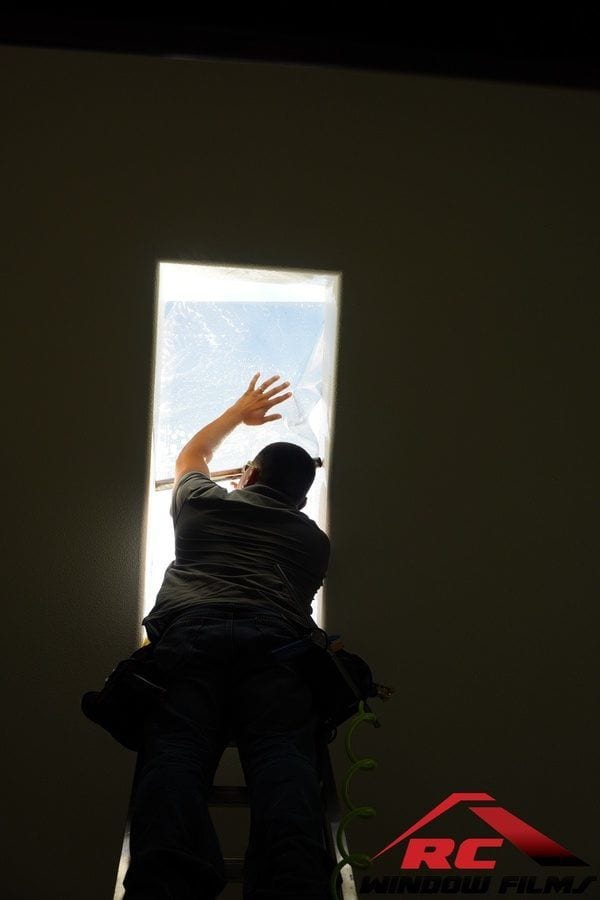
First, let’s discuss the pros of skylights :
- The most obvious is there ability to allow natural light into your home or office, creating a pleasant and comfortable environment.
- Energy Saving during the winter months, natural light allows, inferred, UV, and visible light in, these forms of light work to increase the temperature during winter months.
- Aesthetic improvements, it’s widely acknowledged that skylights make living spaces feel bigger and more open.
Now let us discuss the Cons:
- Too much light on bright sunny days can create glare and bothersome brightness.
- Too much heat gain, leading to overheating, inevitably increasing energy costs, especially during the summer months.
- Heat loss in winter
- Some Skylights don’t have adequate UV blockers to prevent furniture, flooring, and your belongings from fading and discoloring.
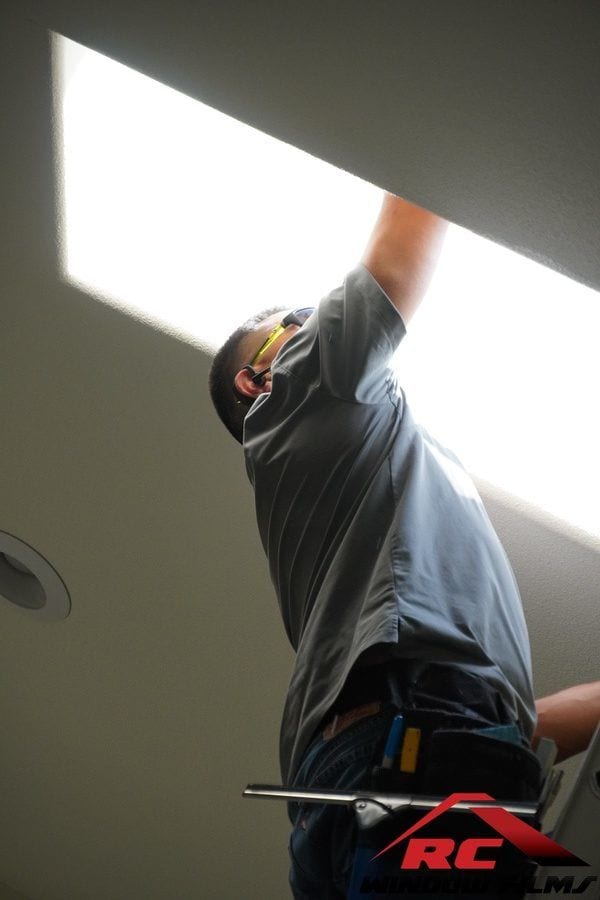
What are somethings you can do to improve your skylights?
Well, this depends on whether you have skylights already installed. If you have pre-existing skylights, Window Tinting is probably the best solution to mitigating the cons.
Window films used to tint skylights largely depends on the type of skylights you have. A competent and licensed professional must apply window films because skylight films come in several options which if used on the wrong kind of Skylight can cause damage and even breakage.

What are the different types of skylights, and what should I be mindful of when considering window film?
Skylights come in several options and can be customized depending on customer requirements.
- Laminated – like a laminated windshield – Laminated glass holds glass together and is often the minimum construction code requirement for overhead window fixtures.
- Tempered glass- a type of glass that is heat-treated and is similar to automotive glass in the way that, this type of glass shatters into tiny pieces lessening the potential damage during breakage. It is important to note, this type of glass can withstand tremendous amounts of heat.
- Dual-pane – dual pane options are virtually limitless in variation. However, they are only skylight applications unique in that they can be laminated on one side and annealed on the opposite side. This type of window is where the exterior portion of the double pane glass is laminated increasing impact resistance. (meeting current building codes.)
The primary reason for understanding the different glass options is to understand the limitations and capabilities of each in regards to heat absorption. Because window films absorb heat, it’s essential to match the film which complements the glass to eliminate the possibility of breakage, seal-failure and more.

Check out the types of glass to better understand the capabilities of each –
Annealed Glass, sometimes called standard glass, is a softer glass that has been thermally treated and then slowly cooled to relieve any internal stresses. Annealed glass tends to break into longer, jagged shards, which can cause significant injury. It is generally used when strength or safety are not concerns, but the cost is.
Tempered Glass or toughened glass is manufactured through a process of extreme heating and rapid cooling; tempered glass is much harder and stronger than regular glass. Another benefit of tempered glass is the ability to stand up to moderate heat (470°F).
Laminated Safety Glass takes the idea of safety glass a step further. Laminated safety glass is crafted by adhering two pieces of annealed glass together by a vinyl layer. The vinyl layer holds the glass together if the glass is broken or impaled.
Which of skylight option must a window film installer use caution?
The simple answer is all, but more specifically, dual-pane, which is the most common fixture. Dual-pane skylight windows are most critical because they require the skills, expertise, and meters to accurately identify the type of glass and coatings present to recommend the best solution to resolve the customer concern.
So, in conclusion:
You must first and most importantly, be sure to identify the type of glass your working with, and then and only then can should you use this advice. Also, this is only advice based on years of experience, and all liability is explicitly yours. ( We have to say this)
- The use of exterior films is highly recommended in all applications, including and especially when laminated glass is present. Most laminated glass is annealed. Annealed glass has a high likely hood of cracking as we learned earlier.
- If and when the glass is a combination of laminated+Tempered glass on both sides (exterior pane & interior pane) feel free to install whatever you like without the concern of heat absorption as it becomes irrelevant at this point because tempered glass has been heat-treated.
- Tempered Glass – follow the same answer as number two.

Proper inspection and Cleaning 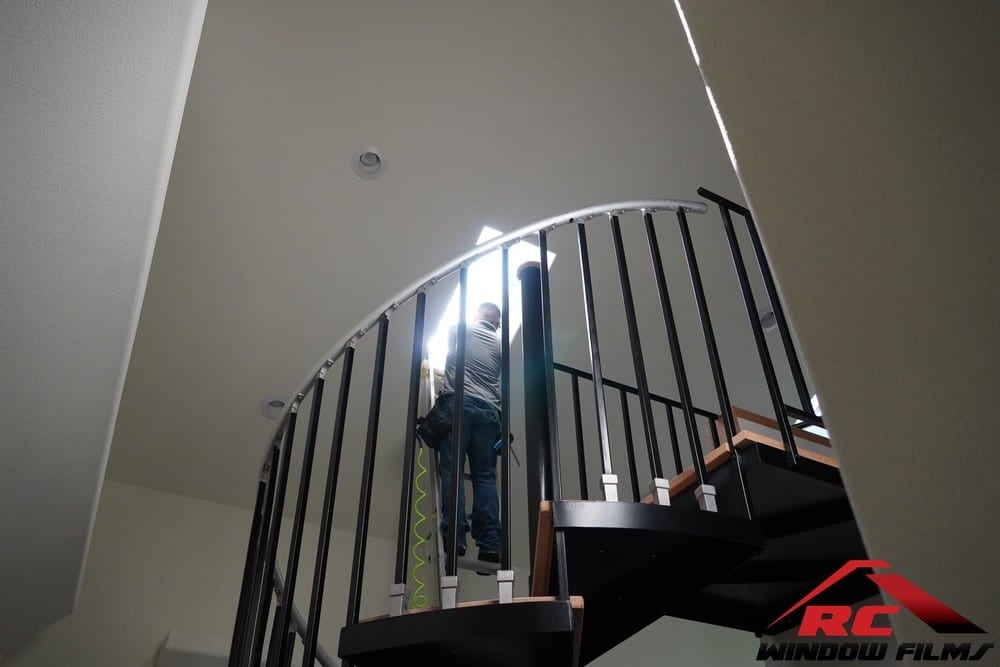
Cleaning the surface of the glass 
installing the film to the skylights 
applying the film to the skylight 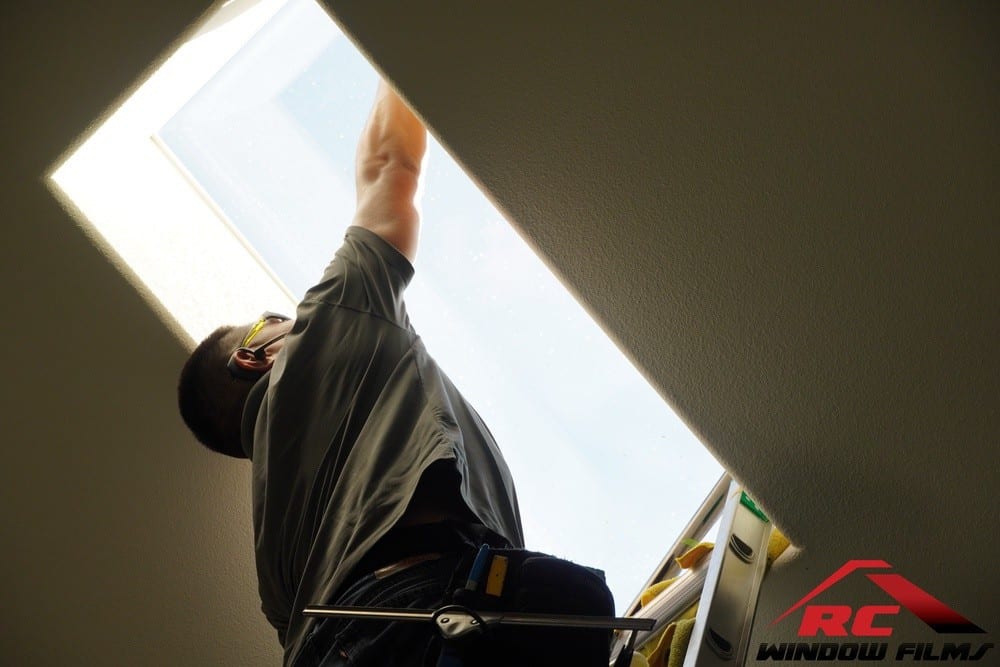
Cutting the edges to the perfect fit 
in action getting ready to apply skylight tint 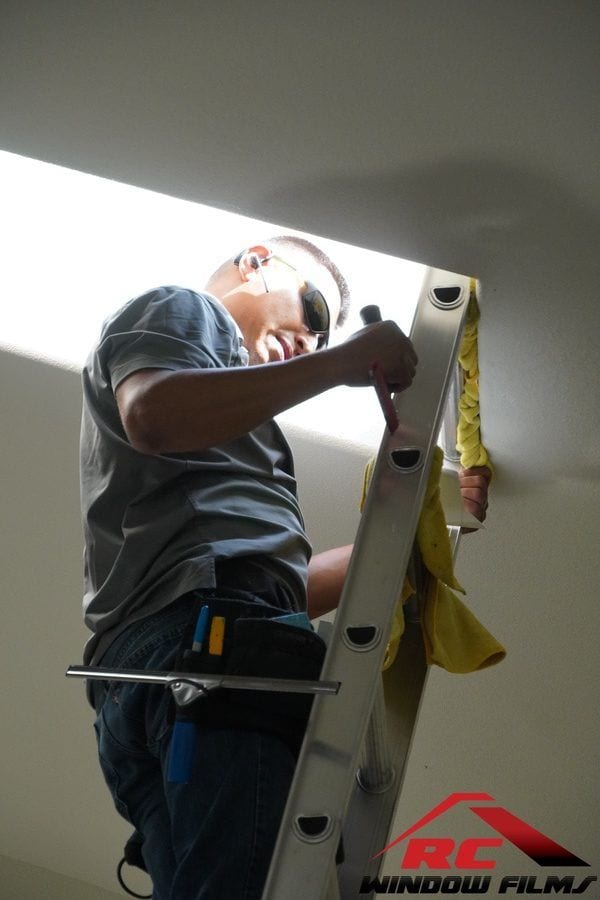
Cleaning our tools for the perfect job 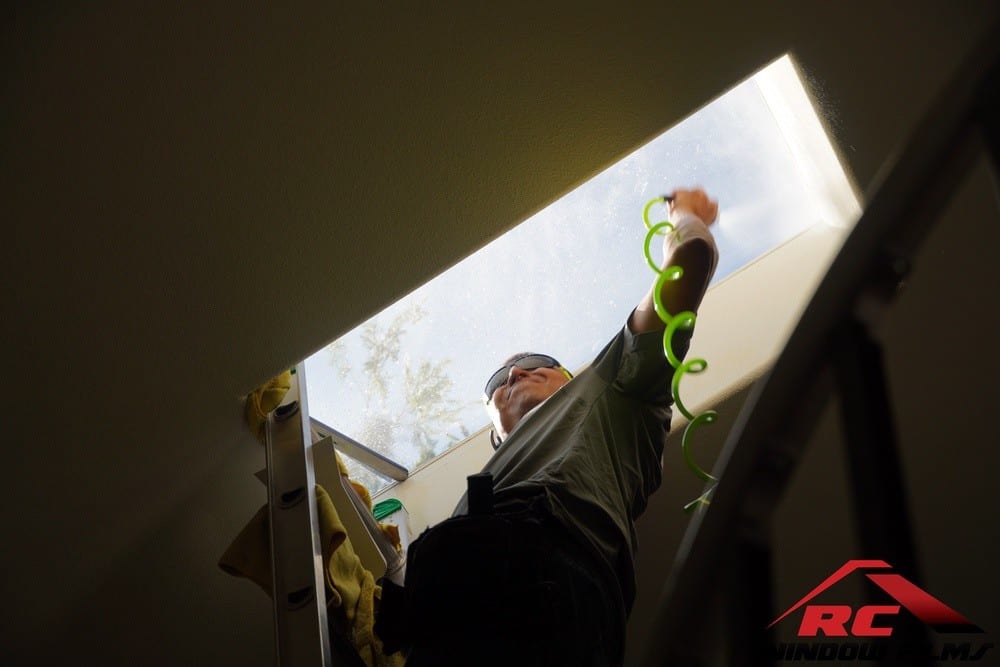
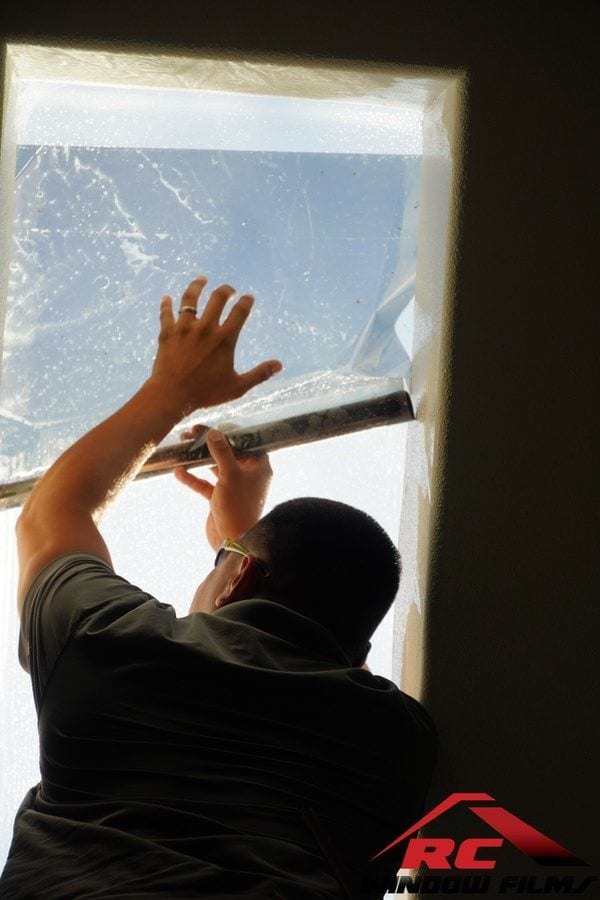
glare reduction of window film 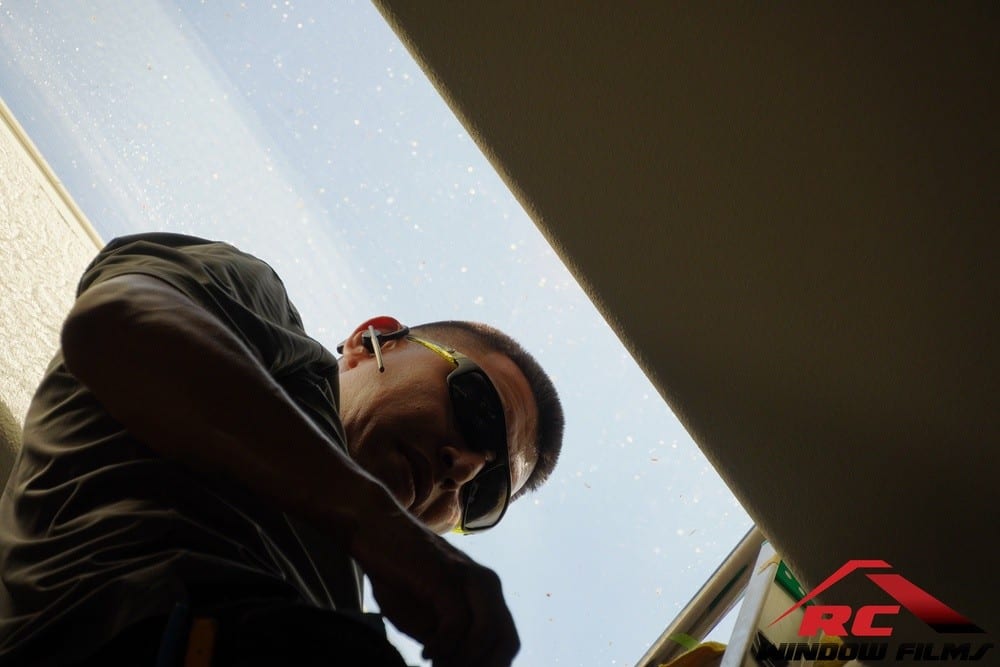


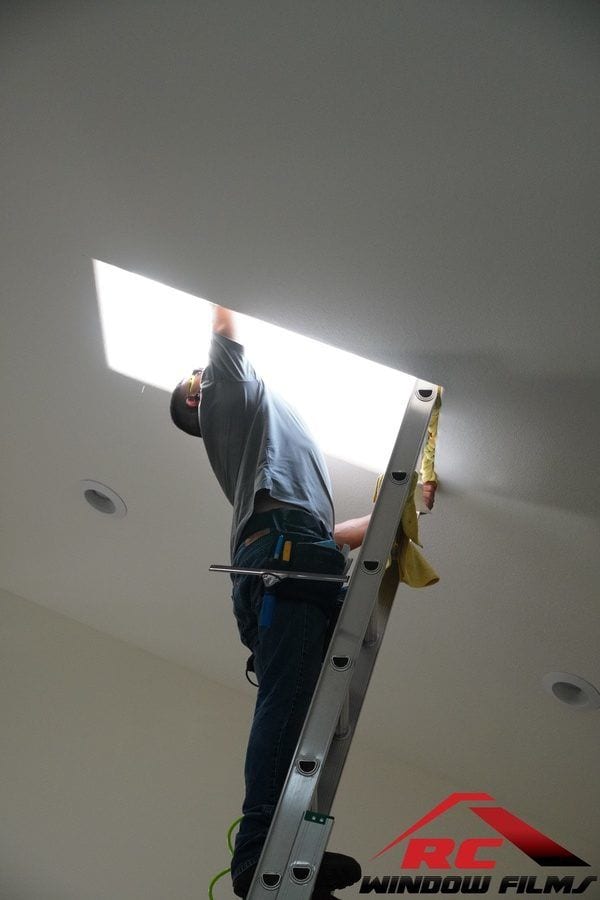
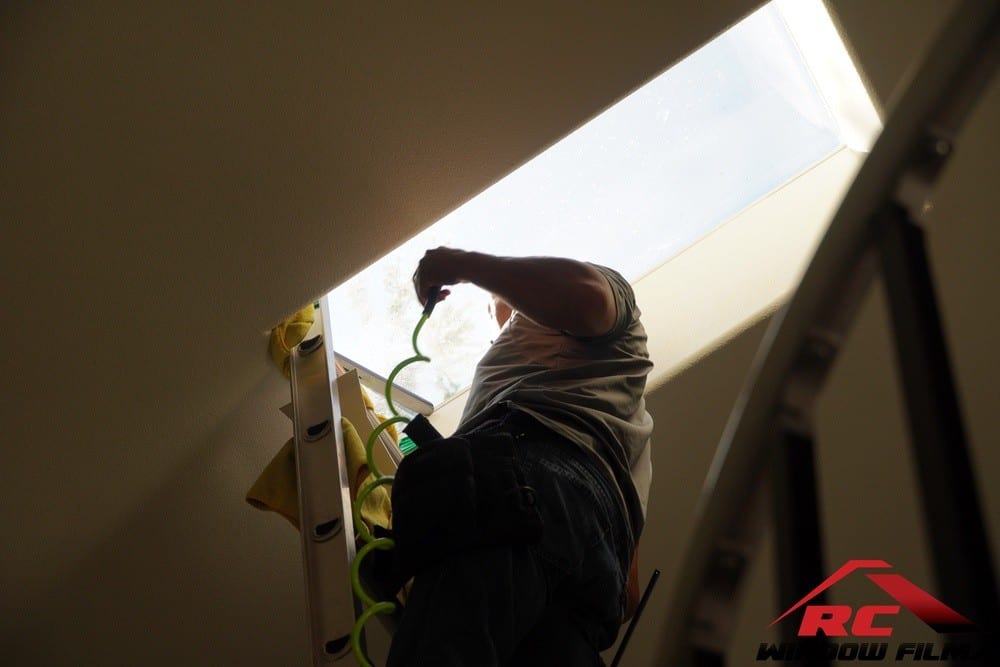
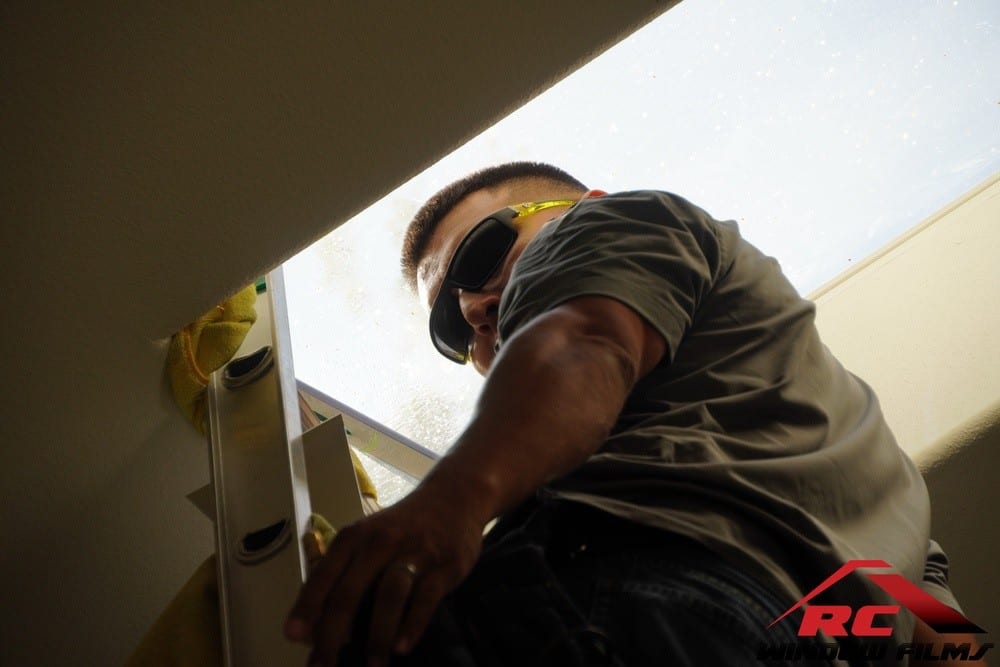

.

